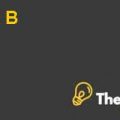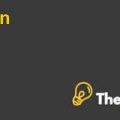OPERATIONS AND INVENTORY MANAGEMENT Case Study Solution
b. Inventory pooling risk:
Inventory pooling risk can appear when the different warehouses of the company are located in different part of the region. The demand in each part of the region related to product has the possibility of being uneven which can lead in the pooling of inventory in warehouses where the demand of product is less, hence, creating pool of inventory which would increase the inventory turnover for days. High inventory turnover in days can reflect less efficiency in the sales of inventory by the company.
The decentralization is adopted by the scientific glass which means different warehouses located in different parts of the region can lead to inventory pooling risk. Nature of demand in different parts of the region can lead to stack up of inventory in different ware houses which can further lead to inventory pooling risk. This inventory pooling risk can be diversified away by the adoption of centralization or determining the demand of different parts of the region separately.
Question 3:
External funding required in 2010:
The external funding that the company will require under their expansion plan will be $10 million. The forecasted sales growth projected by Scientific Glass which can be 20% increase of the current sale. To attain this 20% increase in forecasted sale is required to replace its worn out equipment which is used in the production of the product. Therefore, the $10 million dollar of investment is required by the company in order to meet the projected sales and increases its market share by gaining market capitalization through meeting the demand of the product. Although the price of the products is forecasted to remain stable but the company could increase its profit maximization level through economies of scale by replacing worn equipment and producing maximum unit of output required by the projected demand which is forecasted to be 20% growth in sales.
Question 4:
Relationship between warehouses and inventory levels:
In 2009, it was determined by the Scientific Glass that the company’s inventory holding cost and shipping cost are increasing. It is found out that the increasing inventory level stuck the major part of the capital of the company in work in process which unable the company to allocate internal financial resources to different projects of requirement arouse during a span of time. The increased number of warehouses by Scientific Glass which is the form of decentralization increased the number of inventory possessed by the Scientific Glass which eventually increased the cost of handling inventory therefore the inventory turnover ratio increases which indicated an increase in costs of goods sold and days of inventory in hand also increased which may create inventory pooling risk for the company.
The number of warehouses located in different parts of the region increases the inventory and costs of handling the inventory but it assist the company in achieving around 96% optimum service level provided by the company to its customer. Although the company’s target is to achieve the 99% of optimum service level for customer satisfaction which can be achieved by increasing the number of inventory of stocks in different warehouses. Hence, there is also the problems of freeing up the financial resources for the company by decreasing work in process inventory through increasing sales growth and decreasing inventory. Hence, these are the relationship of warehouse and inventory which are defined by the inventory management challenges faced by the company.
Question 5:
Alternative available for dealing with the inventory problem:
The alternatives which are available to deal with the inventory problems faced by Scientific Glass are mentioned below.
- Ensuring compliance by warehouse managers.
- Eliminating trunk stock.
- Updated inventories and reports.
- Audit of warehouse stock.
Ensuring compliance by warehouse stock:
One of the alternative available to the company is to regulate supervisors of the warehouses to ensure the compliance procedure followed by the warehouses including enforcement of regulations and procedures that must be strictly followed by each warehouse in order to deal with the inventory problem and manage them efficiently. The compliance and regulation should ensure that the company is appropriate level of inventory in order to achieve target service level of 99% service quality.
Eliminating trunk stock:
This alternative should enable the company to ensure that sales person in the company should not be indulged in maintaining the trunk stock which are outdated or demand of which is eliminated with the span of time. Therefore, sales persons should focus more on the selling of new products which could increase the inventory turnover.
Updated inventories and reports:
The other alternative which can be adopted by the company in order to manage and maintain its inventory efficiently is that, the company should regulate all the warehouses located in different parts of the region by acquiring daily or weekly updated reports of inventory maintained by each warehouse which could provide the information about the inventory level and helps the company to take decision according to the desired level of inventory.
Audit of warehouse stock:
The company should ensure that the periodic audit of the inventory is conducted through regular span of time which will enable the company to ensure the inventory level which must be maintained by the company in order to meet the future demand. Audit will help the company to determine the true level of inventory maintained by each warehouse........
This is just a sample partical work. Please place the order on the website to get your own originally done case solution.










